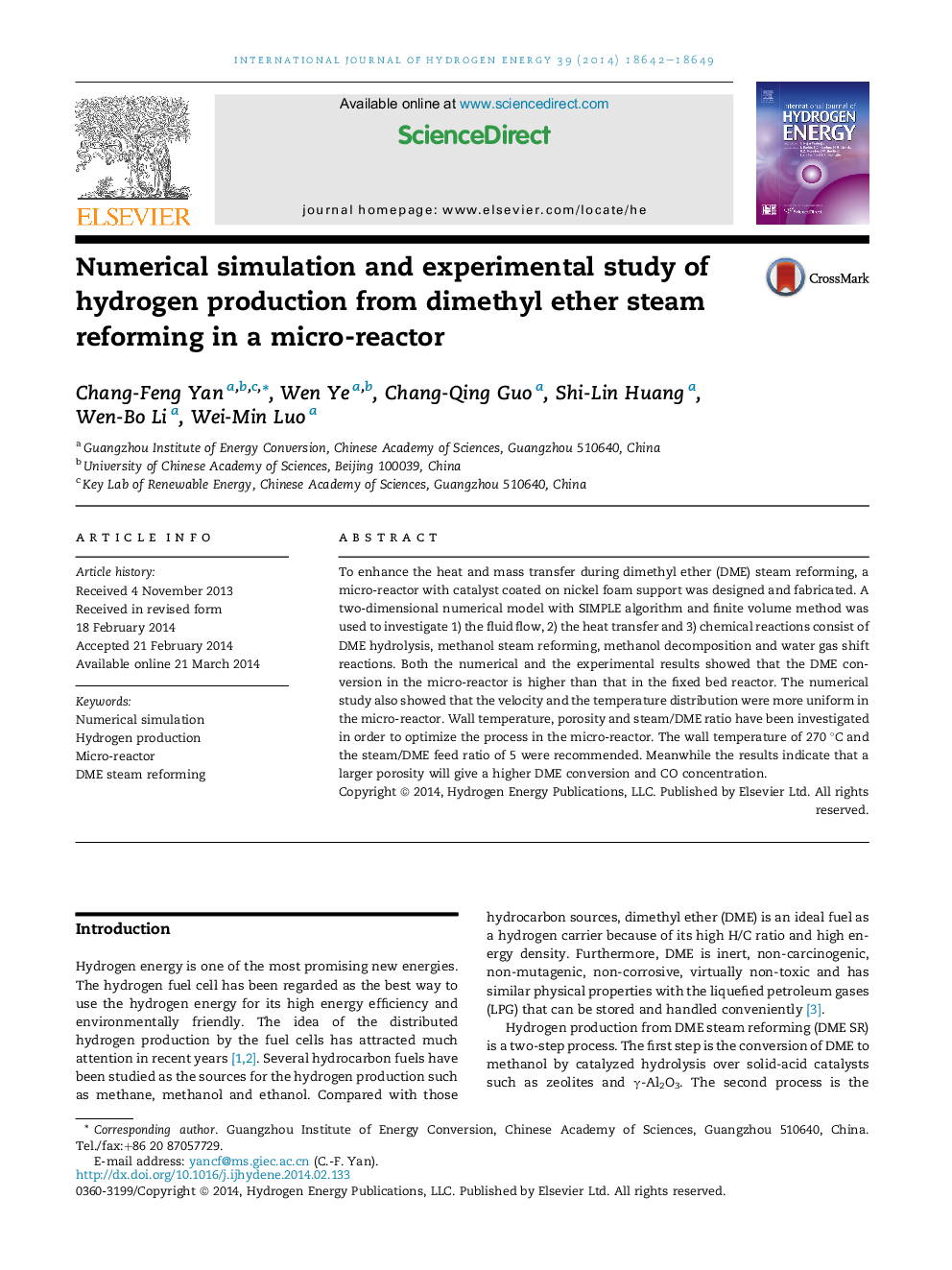| Article ID | Journal | Published Year | Pages | File Type |
|---|---|---|---|---|
| 1280878 | International Journal of Hydrogen Energy | 2014 | 8 Pages |
•New models were established to fit the process of dimethyl ether steam reforming.•The performances of the fixed bed reactor and the micro-reactor are compared.•The models are able to predict the best operating conditions.
To enhance the heat and mass transfer during dimethyl ether (DME) steam reforming, a micro-reactor with catalyst coated on nickel foam support was designed and fabricated. A two-dimensional numerical model with SIMPLE algorithm and finite volume method was used to investigate 1) the fluid flow, 2) the heat transfer and 3) chemical reactions consist of DME hydrolysis, methanol steam reforming, methanol decomposition and water gas shift reactions. Both the numerical and the experimental results showed that the DME conversion in the micro-reactor is higher than that in the fixed bed reactor. The numerical study also showed that the velocity and the temperature distribution were more uniform in the micro-reactor. Wall temperature, porosity and steam/DME ratio have been investigated in order to optimize the process in the micro-reactor. The wall temperature of 270 °C and the steam/DME feed ratio of 5 were recommended. Meanwhile the results indicate that a larger porosity will give a higher DME conversion and CO concentration.
